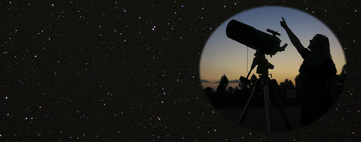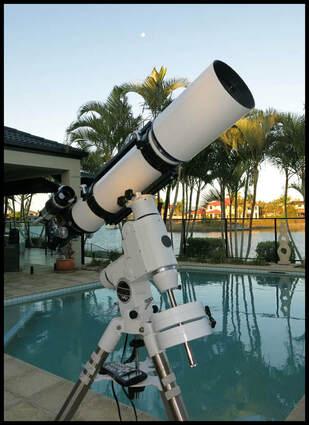 Telescope setup with Moon in the eastern sky
Telescope setup with Moon in the eastern sky It was a very hot evening at 28 degrees Celsius and lots of biting mosquitoes but I was determined to get some nice pictures of the Moon and I did :-)
I was really happy with capturing a few interesting lunar objects with this phase, the first was the extremely bright crater Aristarchus with the long sinuous Vallis Schroteri in Oceanus Procellarum (Ocean of Storms), which was just off from the terminator line, and in full relief…it looked quite spectacular!
The next object was the prominent low walled crater Gassendi that is on the edge of Mare Humorum (Sea of Moisture) and looks just like a diamond ring. And, at this lunar phase you start to see the long ejecta rays from the crater Tycho that is now fully illuminated.
The image of the full disc of the Moon was taken with a Canon 70D camera at prime focus, exposure time was 1/500th second and ISO100. Ten images were captured and stacked in RegiStax6 and processed in PS CS4.
The higher magnified images were taken with a ZWO ASI 120MC-s camera with a 3x Barlow lens attached and captured AVI movie files, which were stacked in RegiStax6 and processed in PS CS4.
~ Some images below of my computer & telescope setup for the lunar images ~
I just know that one night I’m going to accidently fall in… but what can you do but work with what you have,
and hope for the best :-)
The refractor telescope is a 127mm North Group apochromatic, and the lunar images I’m getting out of it are very crisp, the focal length at prime focus is 760.00 mm. For the full disc of the Moon I use a Canon 70D camera, for the high magnification images I love using the little ZWO ASI 120MC-s camera with a 3x Barlow lens attached, which is shown here attached to the telescope.
Don’t forget insect repellent, on this summer time evening I was eaten alive by mosquitoes Ouch!!!
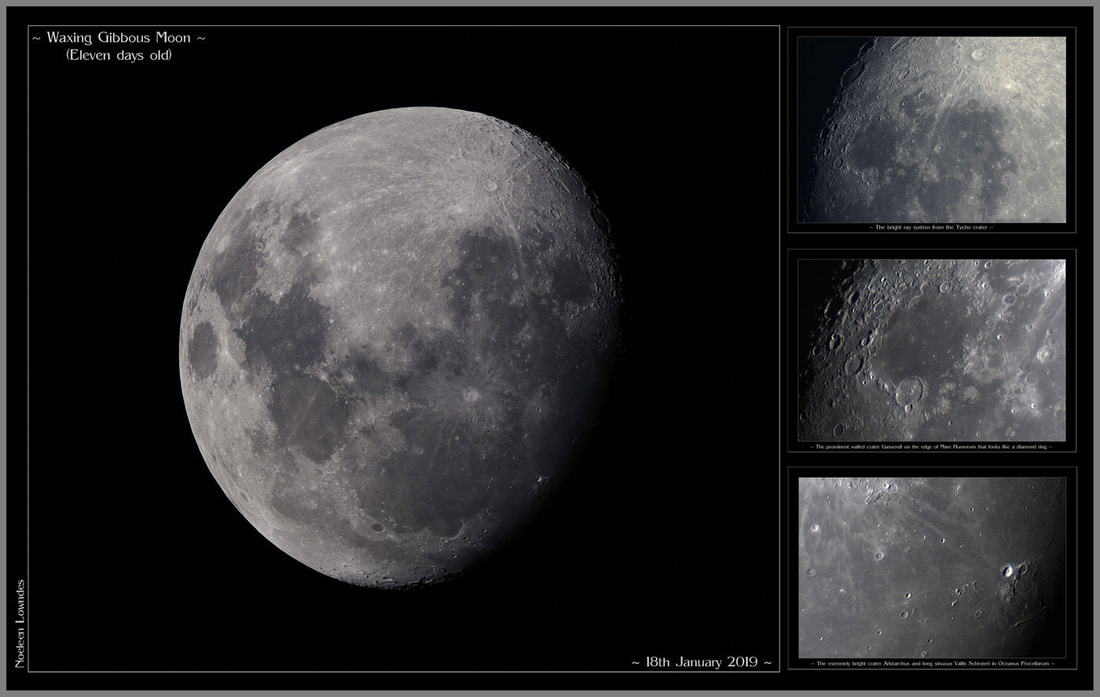
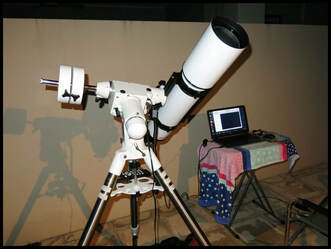
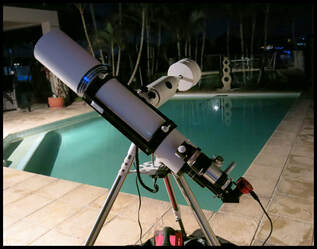
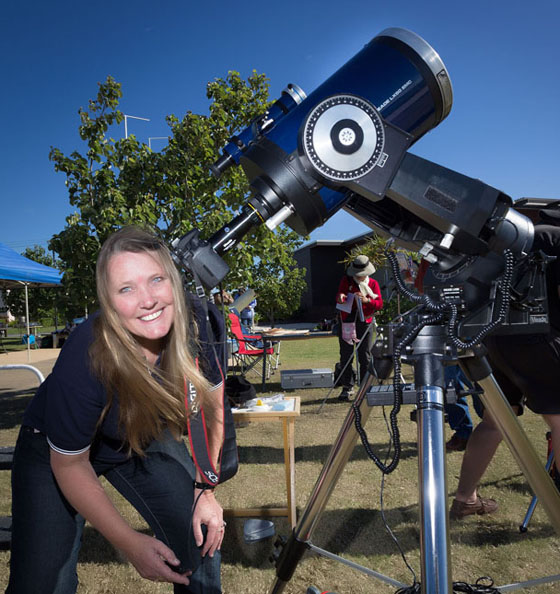
 RSS Feed
RSS Feed
